- Home
- slideshows
- miscellaneous
- What it's like going to the world's biggest horse sale, where royals and millionaires dropped $360 million this year on horses they hope might be the next Kentucky Derby winner
What it's like going to the world's biggest horse sale, where royals and millionaires dropped $360 million this year on horses they hope might be the next Kentucky Derby winner
Keeneland is the world's largest thoroughbred auction house. Throughout 2018, it sold more than $600 million worth of horses — $377 million during its September sale alone.

Keeneland is also a horse racing company.
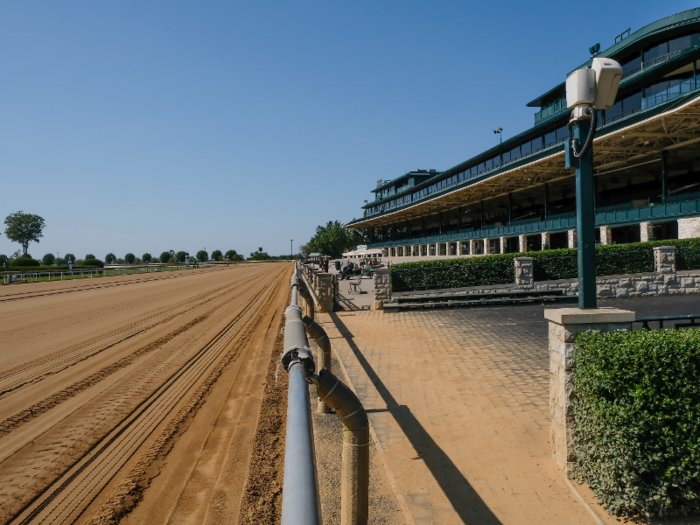
Keeneland hosts races on approximately 32 days per year, with eight to 10 races per day.
The auction house throws lavish parties for its VIP buyers and sponsors.
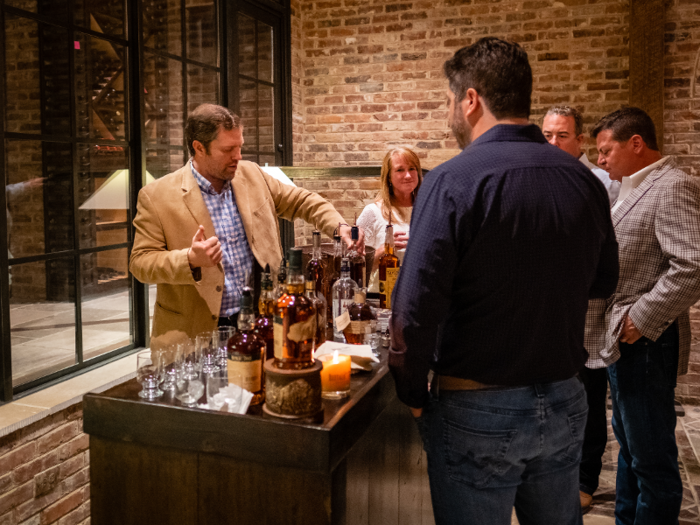
I got into the glitzy kickoff party for this year's September sale, which took place at an opulent venue in Lexington and included electric violin and cello performers and a rare bourbon tasting.
At the party, Keeneland president and CEO Bill Thomason led a Champagne toast in honor of the horse, because, as he said, "the horse is the reason for our existence and why we do what we do."
On the first day of the September sale, I got to Keeneland at about 9:00 a.m. The sale was set to kick off at noon.
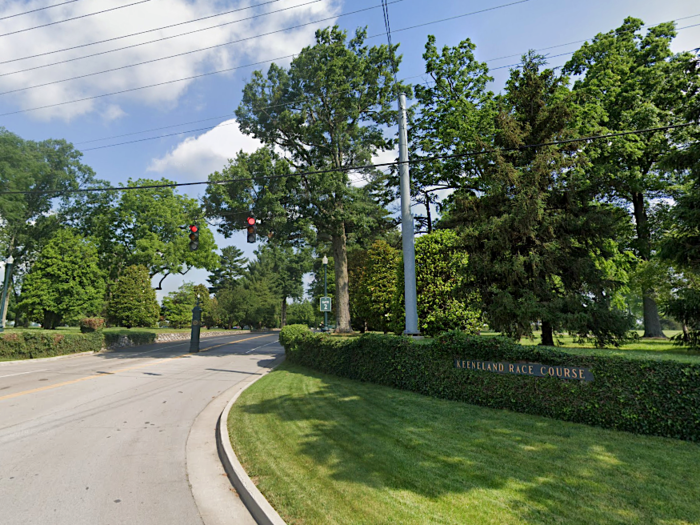
The race course and auction house are about seven miles from downtown Lexington.
The massive parking lot was already filling up with cars, many of them luxury vehicles like Range Rovers and Mercedes.
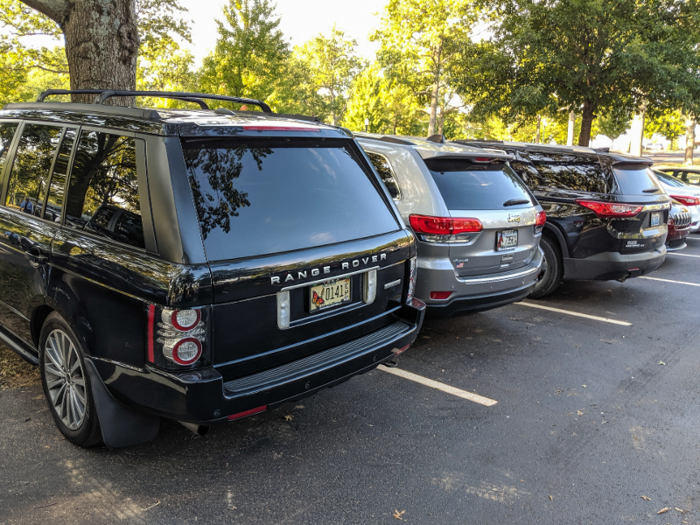
Keeneland doesn't keep track of exactly how many people attend the September sale, but Amy Owens, a communications associate at Keeneland, told me that "thousands of people" are involved in the sale.
That includes Keeneland employees, those who sell horses (and all their employees), buyers and their associates, people from van companies, insurance companies, veterinary clinics, and also tourists who simply want a peek into the whole affair.
After I parked my rental car, I started walking, following signs that pointed me to the sales pavilion.
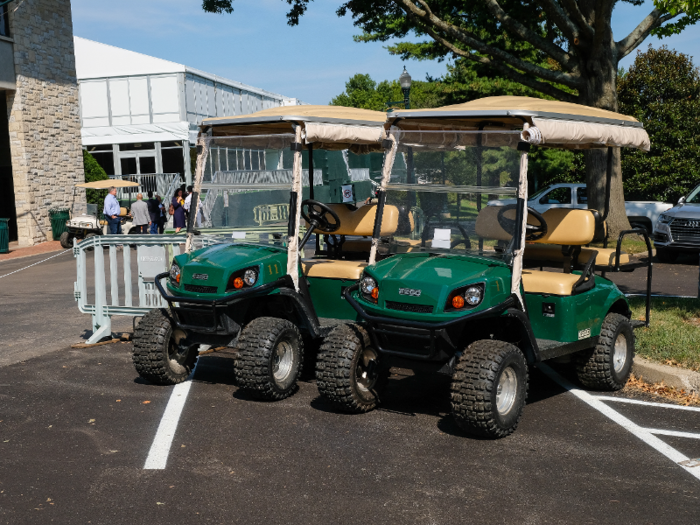
But I'd only taken a few steps when a man driving a forest-green (or rather, Keeneland green, as I would soon realize) golf cart pulled up next to me and offered me a ride.
My first stop was breakfast at Keeneland's Equestrian Dining Room, a casual eatery on the ground floor of the grandstand, with Keeneland's chief marketing officer, Christa Marrillia.
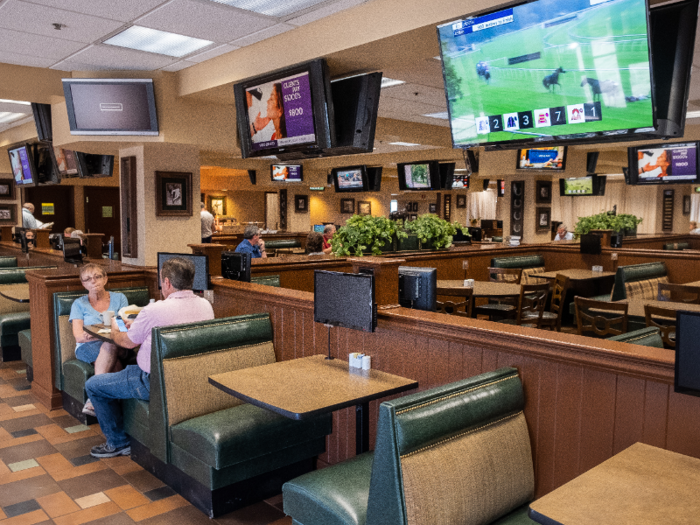
The restaurant has a buffet and offers an À la carte menu with items like pancakes and quiche. I got a mushroom quiche with a side of breakfast potatoes, which was tastier than I expected it to be for the restaurant's casual, diner-like setting.
All the menus at Keeneland's various hospitality facilities are created by their executive chef, Marc Therrien.
After breakfast, I headed over to the barn area behind the sales pavilion, where employees of the farms that brought horses to the sale were walking the yearlings around, warming them up and showing them off.
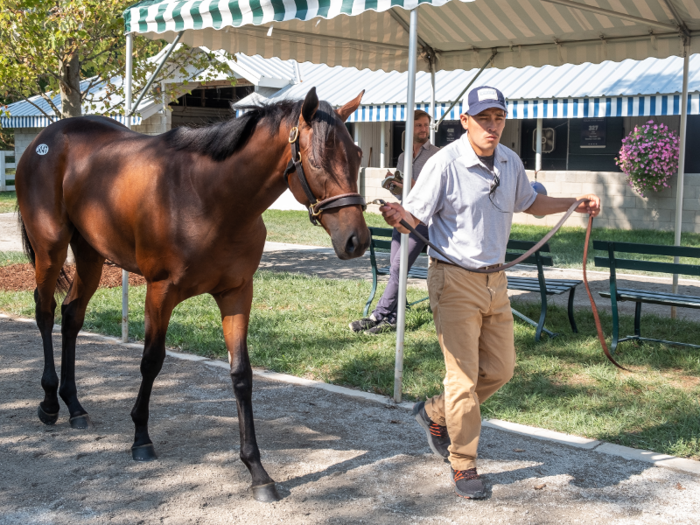
This wasn't the first chance potential buyers had to see the yearlings.
While the first day of the sale was a Monday, previews — where prospective buyers could set up private viewings of individual horses — had been taking place since the previous Thursday, when the yearlings arrived at Keeneland.
But some people were still viewing horses just a couple of hours before the sale was set to start, perhaps taking one last look before deciding to bid.

In addition to a yearling's pedigree, potential buyers are looking at the horse's conformation, which basically means how balanced the horse's body is. They'll look closely at the horse's proportions, muscles, legs, and how the horse walks.
It's all to try and determine how the yearling might perform as a racehorse, and how likely it is to sustain any injuries — because a horse that isn't well-balanced is more prone to getting hurt.
Christa Marrillia, Keeneland's chief marketing officer, compared the sale to the NBA draft because it's "all based on potential."
Prospective buyers and their veterinarians can also visit the on-site repository, where they can find every horse's medical records, x-rays, and details on any surgeries or issues.
The majority of horses at the September sale are Kentucky-bred because everyone wants a Kentucky bred-horse, Keeneland's director of communications, Amy Gregory, told me.
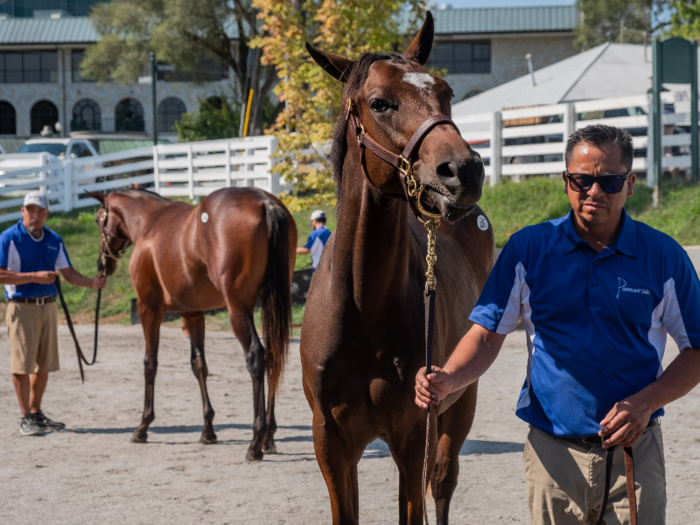
But there are also horses from Russia, India, France, England, Ireland — all around the world.
"They all want American pedigrees to infuse into their bloodstock back home," Gregory said.
Before the horses are taken up onstage, they are carefully brushed and beautified.

During a tour of the Taylor Made Farm facilities at Keeneland, an employee said they will dye a horse's hair if there are any gray streaks and paint their feet with fish oil to make them look nice and shiny.
Potential buyers can learn more about each yearling in the sales guide.
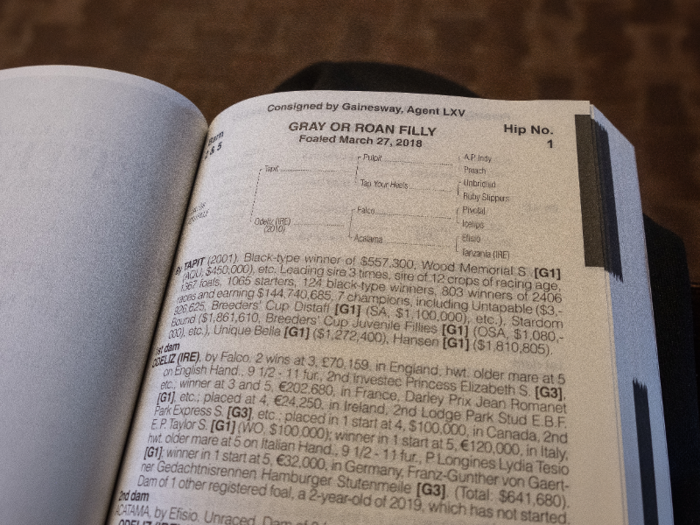
They can look up each yearling's sire (father) and dam (mother), as well as the sire's and dam's achievements.
The first yearling to be auctioned off, for example — hip number one — is the filly of Tapit, who had a moderate racing career but went on to become a top breeding stallion. In the sales guide, you can see that Tapit's offspring have brought in almost $145 million in career earnings.
Ahead of taking their turns on stage, the horses are walked around the show barn, a large covered outdoor holding area.

Here, Keeneland staffers are watching each and every move to make sure the right horse advances to the sales pavilion.
Then, when the horse is up next, it's brought into the sales pavilion's indoor holding area, where it's walked around in circles until it's led on stage to be bid on.

Onlookers gathered in this area, watching the horses coming in right before they were auctioned off — sometimes for millions of dollars.
When a horse's hip number approaches, it's led up this walkway and onto the stage.

Keeneland's iconic sales arena can seat up to 700 people, although it wasn't even half full on the first day of the sale.
Thousands of people descend on Lexington for the September sale, but as the sale lasts for two weeks, not all the attendees come for the first day, or even the first week.
The most coveted yearlings up for auction at the September sale are the offspring of high-profile race horses such as 2015 Triple Crown winner American Pharoah and 2018 champion Justify.
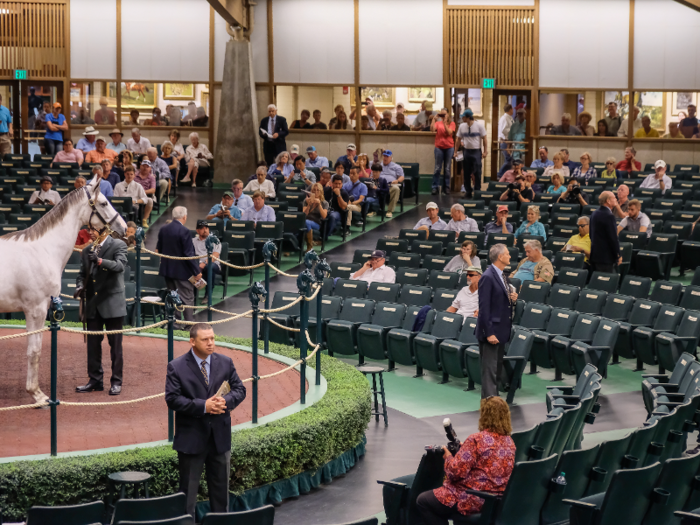
"Book One" of the September sale — the first three days of the sale — is made up of the yearlings that are expected to fetch the highest prices.
"What you're seeing right now is the cream of the crop," Bill Thomason, president and CEO of Keeneland, told me after the first day of the sale. "You're seeing the best sires and the best pedigrees ... the best looking horses. ... They're not all at this level."
But of course, these horses have never raced before — or even been ridden.
Whereas the November breeding stock sale sells proven race horses, breeding stallions, and broodmares, at the September sale, "you're selling the possibility," Marrillia told me at breakfast. "You're selling the future... The dream of winning the Derby."
According to Gregory, the communications director, a whole new wave of buyers will come after Books One and Two of the sale, made up of more of "regional buyers and mom-and-pop type farms and racing outfits."
From my various vantage points, no matter how hard I tried, I could never spot anyone actually bidding. But that's what the bid spotters are for.

Several bid spotters in suits were stationed in the aisles throughout the sales arena, scanning the crowd intently. Each spotter is assigned specific buyers, so they know where they're sitting and their own individual, subtle bidding signals.
Whenever they spotted a bid, the spotters would yell something that sounded like "hup!" — I asked around and nobody seemed to know what they were saying, if it was even an actual word — and then they gave beckoning gestures like they were encouraging the person to keep on bidding.
While the bid spotters wore suits, most of the guests at the sale were casually dressed.
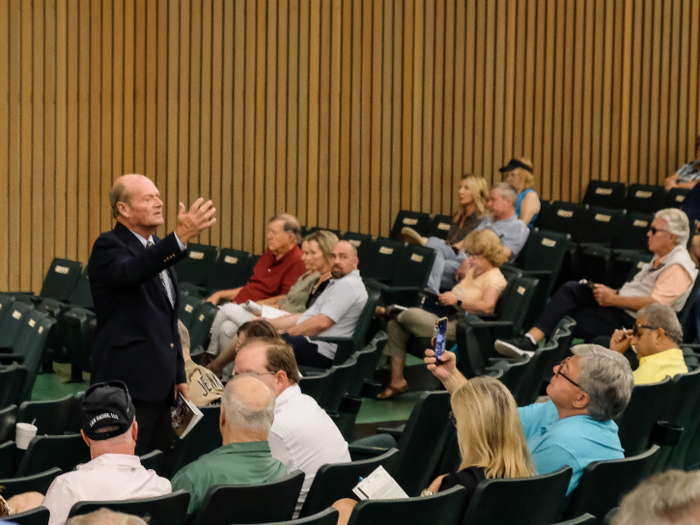
I saw lots of polo shirts, khakis, baseball caps, and jeans.
I found it interesting that while the horse crowd can certainly be fancy, as I saw at Keeneland's kickoff party, the sale itself is clearly about work, not dressing up or showing off.
The seats in the sales arena are reserved for prospective buyers, but behind a glass wall encircling the back of the arena, many observers sat on benches and watched the sale from a distance.
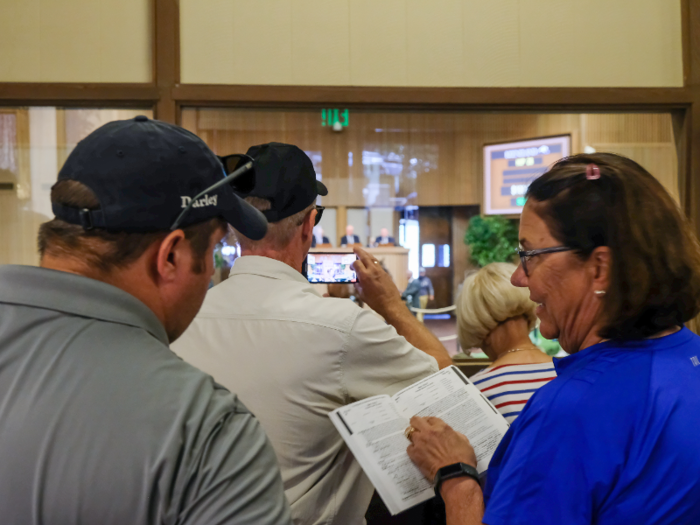
While the atmosphere during the auction was relatively subdued most of the time, the energy changed noticeably when bids for a horse surpassed $1 million.
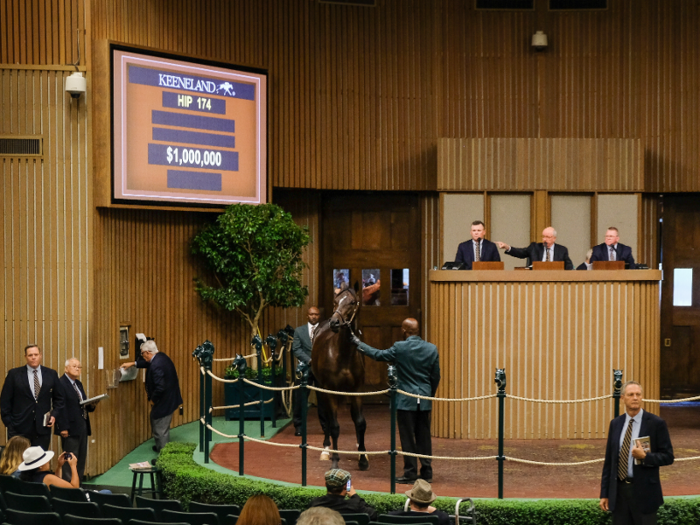
The level of chatter in the hallway behind the glass wall would rise, and there was a palpable tension in the air as people waited to see how high the bidding would go.
After particularly exciting sales, reporters would rush to interview the buyer, if he or she was anywhere to be found.
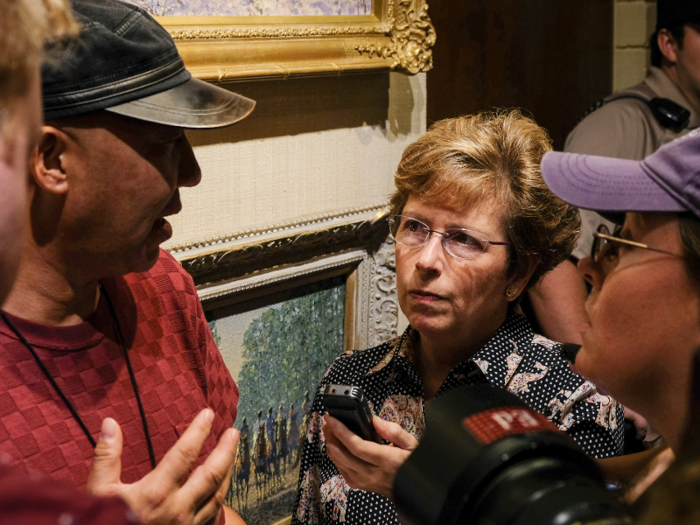
In many cases, the buyer isn't even at the sale.
When Japanese buyer Yuji Hasegawa bought a $1.5 million colt on the first day of the sale, it was his agent, Hiroyasu Takeuchi, who was actually on-site to do the bidding and speak to reporters.
Hasegawa, the buyer, is a new player on the thoroughbred scene in Japan, according to Bloodhorse Magazine.
The agent told reporters the plan was to take the colt back to Japan for now and hopefully later bring him back stateside to compete in the Kentucky Derby.
Once the bidding has been closed, each horse is brought back to its temporary stall at Keeneland's barn area, where it must be picked up within 24 hours.
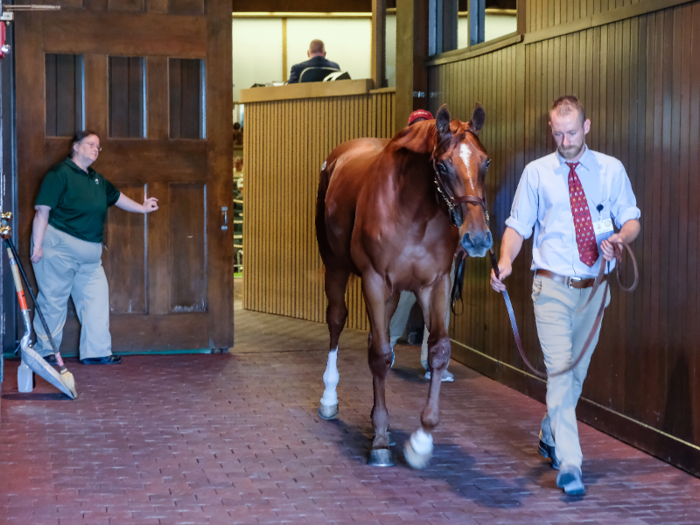
Keeneland encourages buyers to pick up their horses as quickly as possible to make room for the next round of yearlings to be brought in.
At a van counter in the sales pavilion, buyers can arrange transport of a horse via various companies. To leave the property with a horse, the buyer or transportation company needs to have the bill of sale in hand, and they'll need to pass through three gates that are guarded 24/7.
Keeneland offers several dining options for guests at its horse sales. For casual bites, attendees can stop at the Pavilion Bar within the sales pavilion.
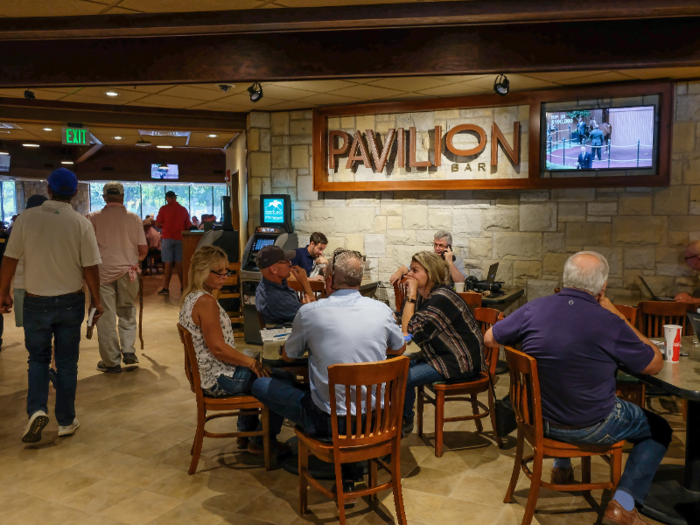
Of course, there are televisions everywhere so nobody has to miss a moment of the sale.
For a more upscale sit-down dining experience, there's the Buffet at the Saddling Paddock Chalet, barely a minute's walk from the sales pavilion.
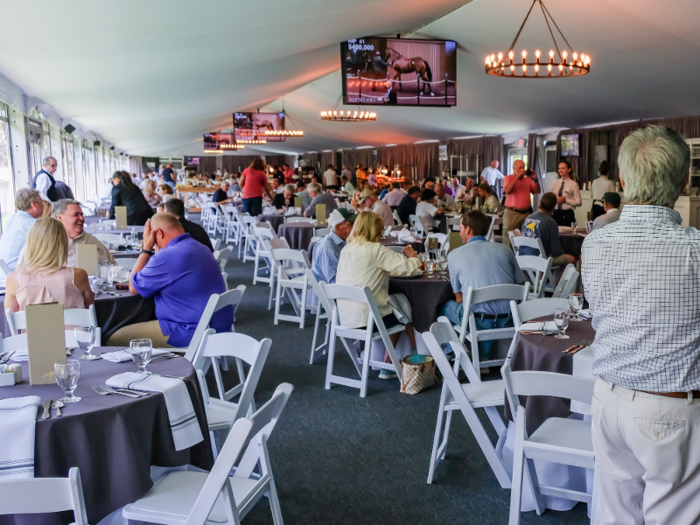
For lunch, I enjoyed two plates from the buffet's spread, which included various meats — from corned beef to brined turkey — and sides such as salads, charcuterie, mac 'n' cheese, and multiple types of desserts.
For the VIP guests at the sale, there's the Sycamore Room, which is reserved for those who spend $10 million or more at Keeneland's horse sales each year.
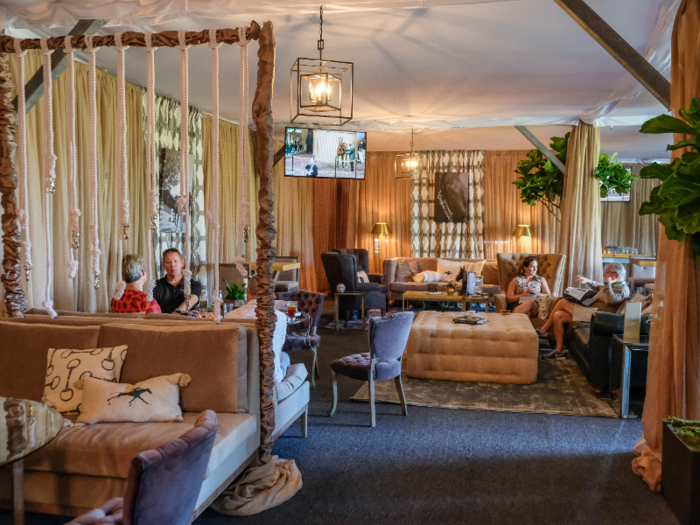
In the opulently decorated lounge, guests can relax on plush couches and chairs and enjoy complimentary drinks and snacks. They can also reserve private conference rooms and use computers provided for them to do any necessary work.
But the ultra-VIP buyers might not even be found in this lounge. The Sheikh of Dubai, for example, has a private lounge in the grandstand area where he watches the sale on TV while one of his representatives bids for him in the sales arena.
While I briefly spotted Sheikh Mohammed chatting with legendary horse trainer Bob Baffert outside behind the sales pavilion on the first day of the sale, he seemed to mainly stay out of the public eye during this year's sale.
"We always try to provide him with the most privacy he needs," a Keeneland employee told me.
At this year's sale, the Sheikh bought four of the seven yearlings that sold for $2 million or more at the auction. In total, he spent $16 million on 10 horses.
In total, 2,855 horses sold for a combined $360 million at Keeneland's September sale this year.
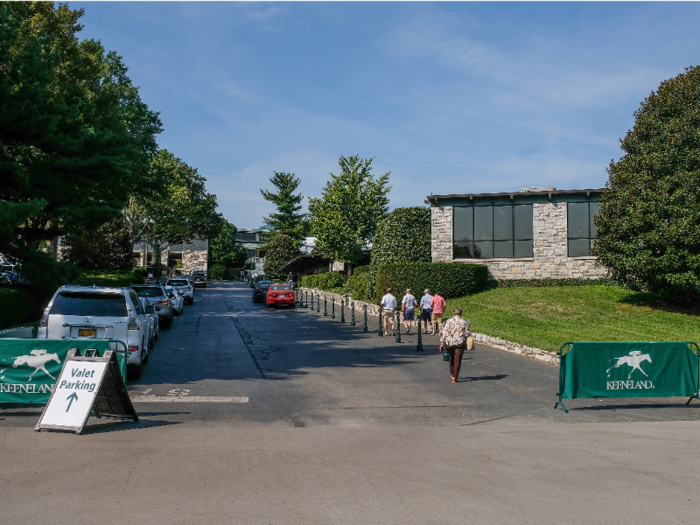
The most expensive yearlings sold were an American Pharoah filly for $8.2 million, which was bought by Mandy Pope's Whisper Hill Farm, and a $4.1 million colt sold to Sheikh Mohammed of Dubai.
After spending the day at the Keeneland sale, I was blown away by the amount of money spent on horses that have never even been ridden — essentially, as Marrillia put it, millions spent on "the possibility," on "the dream of winning the Derby."
As I walked through the hallway of the sales pavilion that afternoon, I heard a man say something to his companion that pretty much summed it up for me: "This is a rich man's sport."
Indeed.
Popular Right Now
Popular Keywords
Advertisement